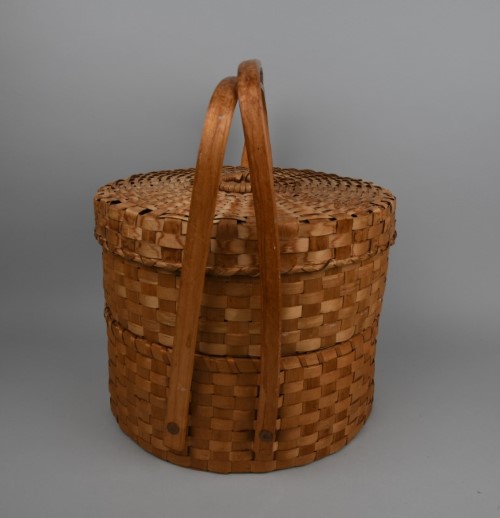Utility Baskets
A staple in the daily lives of Wabanaki communities, utility baskets are built to be sturdy and functional, used for transporting and storing food and household supplies. In recent years, baskets-artists such as Fred Tomah have transformed these utilitarian objects into elegant, beautiful forms.

Cake Basket, 1915
Unidentified Artist
Cake Basket, 1915
Unidentified Artist
(Penobscot)
Ash
Peary-MacMillan Arctic Museum, Gift of Caroline A. Bishop, 2019.15.3.a,b,c
This three-tiered cake basket, made from wide strips of black ash, was specially made for someone who liked to bake cakes and pies for potluck dinners. Designed with three layers, the basket’s bottom-most level is intended for carrying pies and cakes and the top layers for storing napkins and silverware.

full record

Katahdin Basket, 2010
Fred Tomah
Katahdin Basket, 2010
Fred Tomah
(Maliseet, 1951-2018)
Split brown ash
Collection of the Maine Historical Society, 2017.051
Fred (Sonny) Tomah, a member of the Houlton band of Maliseet, created this basket in 2010. Fred was a significant leader in his community and advocated for federal recognition of the Maliseet Tribe, which was granted in 1980. He also continued traditional practices of basket-weaving by learning from master basket weavers like Jim Tomah. This basket was created by weaving dyed and undyed strips of split brown ash and using a pattern called a plain weave, which created the checkerboard-style finish. The basket’s four corners are said to represent the four Wabanaki nations—Maliseet, Mik’mac, Passamaquoddy, and Penobscot.


 Museum of Art
Museum of Art